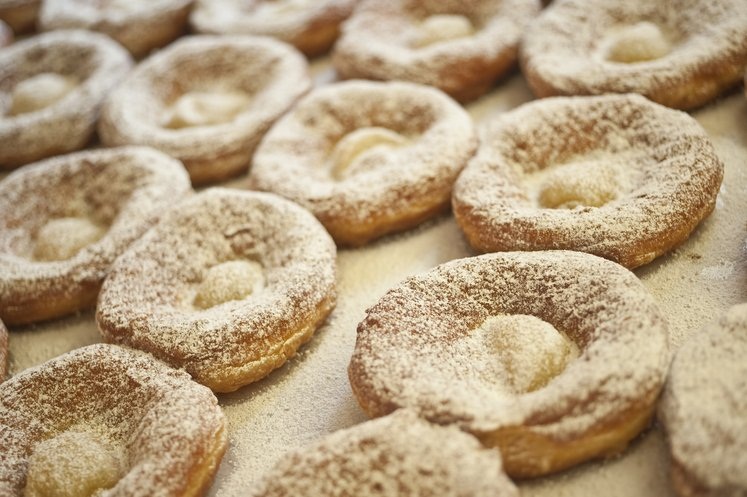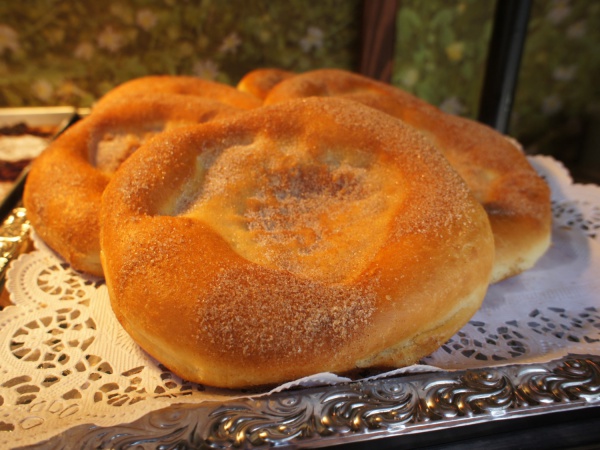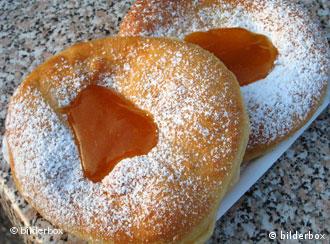Knieküchle
Knee fritters, also Auszogne ( bair. to high German Unbroken ), donuts or fritters ( Kiacherl or Kiachl ), in Lower Bavaria also Rottnudel, in Upper Franconia Streubla, in Swabia ( Fenschter ) Kiachle in Tirol Kiachl and in the rest of Austria donuts, in itzgründischen area pancakes, are a traditional pastry of German cuisine and Austrian cuisine. You are an especially in Bavarian Swabia, Old Bavaria, Franconia, West Austria and Thuringia widespread donuts.
Production
The fritters are usually made of pure yeast dough, this may vary regionally but also easy. Is very common, for example, the addition of raisins. The dough is shaped so that the fritters are very thin in the middle and the outside have a uniform thick bead. You are fry in hot lard and sprinkled with powdered sugar. A knee Küchle has a thin white border on the bead, as it floats on the hot fat during frying.
Knee fritters were formerly mainly baked in the harvest season and major holidays, especially for fair or dult. In Franconia is partially differentiated between " Catholic " and " Protestant " fritters, depending on whether the trough ( Catholic) or the elevation ( Protestant) is coated with powdered sugar. The Austrian donut is usually eaten with apricot jam. The Tyrolean Kiachl is eaten sprinkled with cranberry, with sauerkraut or with powdered sugar and is a popular dish on Tyrolean Christmas markets.
Names legend to knee Küchle
Knee Küchle bear her name because supposedly the Frankish bakers dough over the knee went out so that it is so thin in the middle, that you can by reading a love letter through it. Hence the saying: "Do scheyne Schüssalasküchla baggn, need Braade knee " ( Do you want to bake beautiful bowl - fritters, so you need wide knee). Accordingly, other names are Schüssalasküchle and mildly ironic allusion to the broad knee, Catholic fritters.










